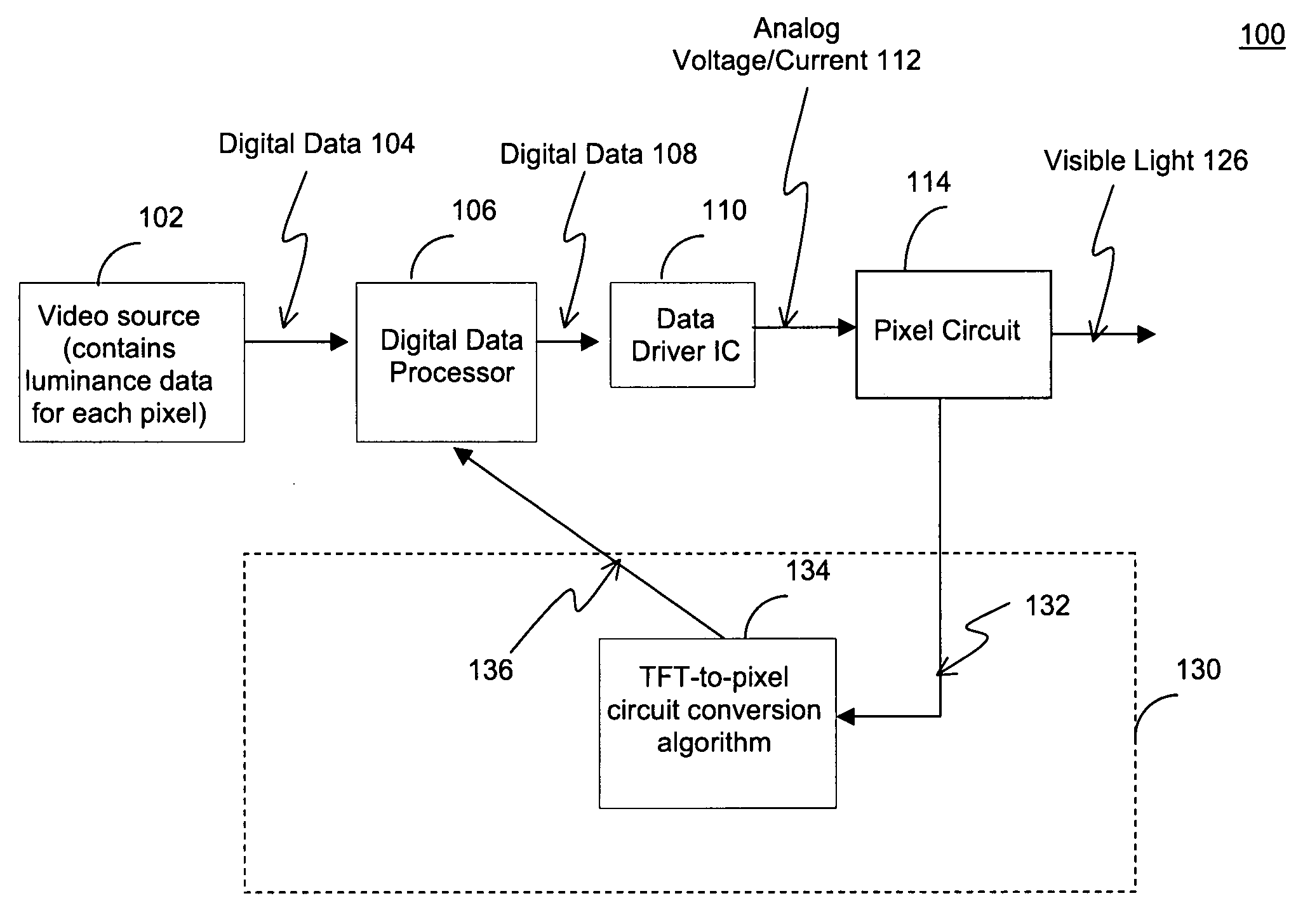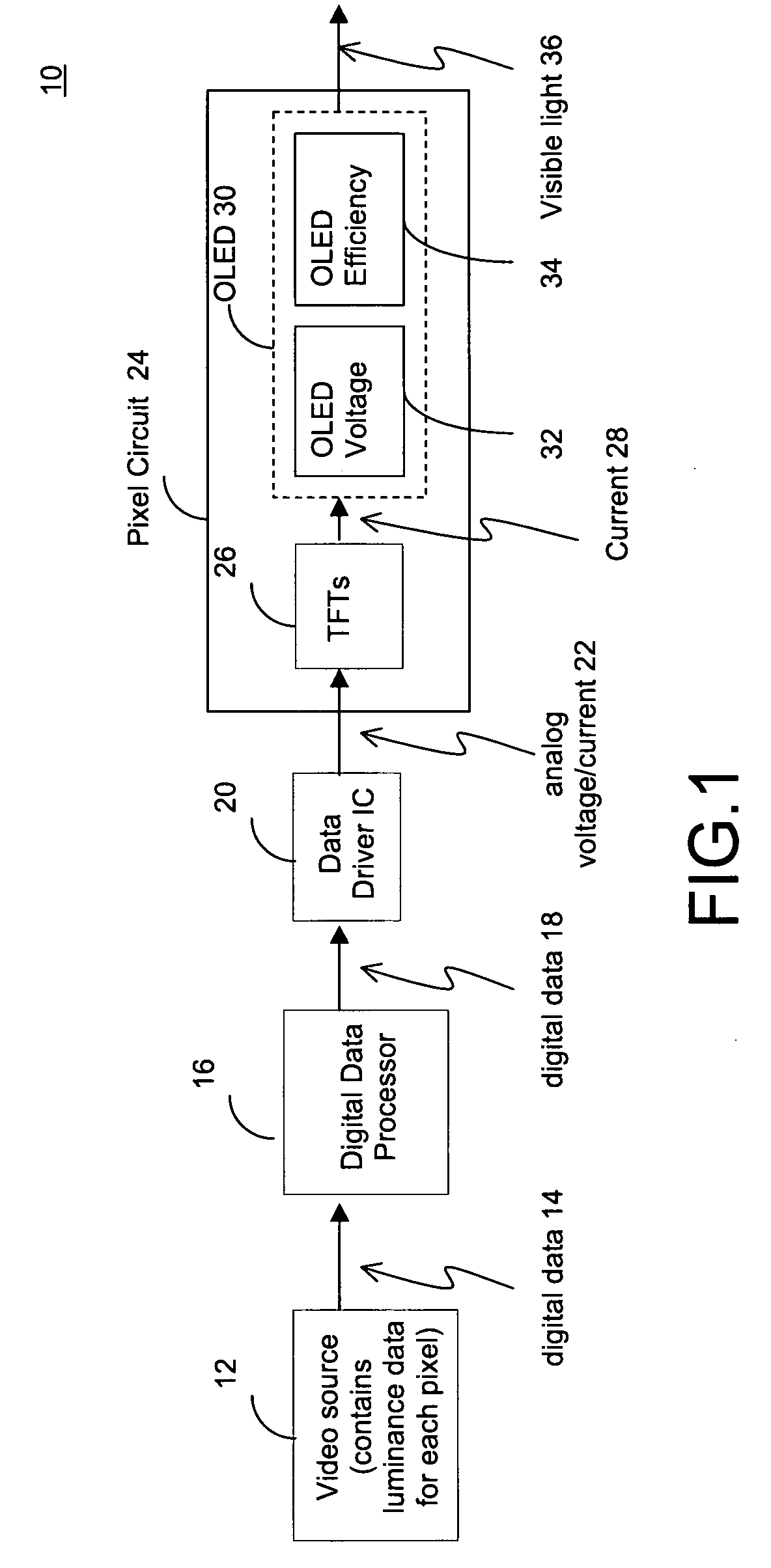Method and system for compensation of non-uniformities in light emitting device displays
a technology of light emitting devices and non-uniformities, applied in the field of display technologies, can solve problems such as errors on visible light, different pixels may have different amounts of degradation, and non-uniformities in the illumination of a display
- Summary
- Abstract
- Description
- Claims
- Application Information
AI Technical Summary
Benefits of technology
Problems solved by technology
Method used
Image
Examples
Embodiment Construction
[0029] Embodiments of the present invention are described using an AMOLED display which includes a pixel circuit having TFTs and an OLED. However, the transistors in the pixel circuit may be fabricated using amorphous silicon, nano / micro crystalline silicon, poly silicon, organic semiconductors technologies (e.g. organic TFT), NMOS technology, CMOS technology (e.g. MOSFET), or combinations thereof. The transistors may be a p-type transistor or n-type transistor. The pixel circuit may include a light emitting device other than OLED. In the description below, “pixel” and “pixel circuit” may be used interchangeably.
[0030]FIG. 3 illustrates the operation of a light emitting display system 100 to which a compensation scheme in accordance with an embodiment of the present invention is applied. A video source 102 contains luminance data for each pixel and sends the luminance data in the form of digital data 104 to a digital data processor 106. The digital data processor 16 may perform som...
PUM
 Login to View More
Login to View More Abstract
Description
Claims
Application Information
 Login to View More
Login to View More - R&D
- Intellectual Property
- Life Sciences
- Materials
- Tech Scout
- Unparalleled Data Quality
- Higher Quality Content
- 60% Fewer Hallucinations
Browse by: Latest US Patents, China's latest patents, Technical Efficacy Thesaurus, Application Domain, Technology Topic, Popular Technical Reports.
© 2025 PatSnap. All rights reserved.Legal|Privacy policy|Modern Slavery Act Transparency Statement|Sitemap|About US| Contact US: help@patsnap.com



